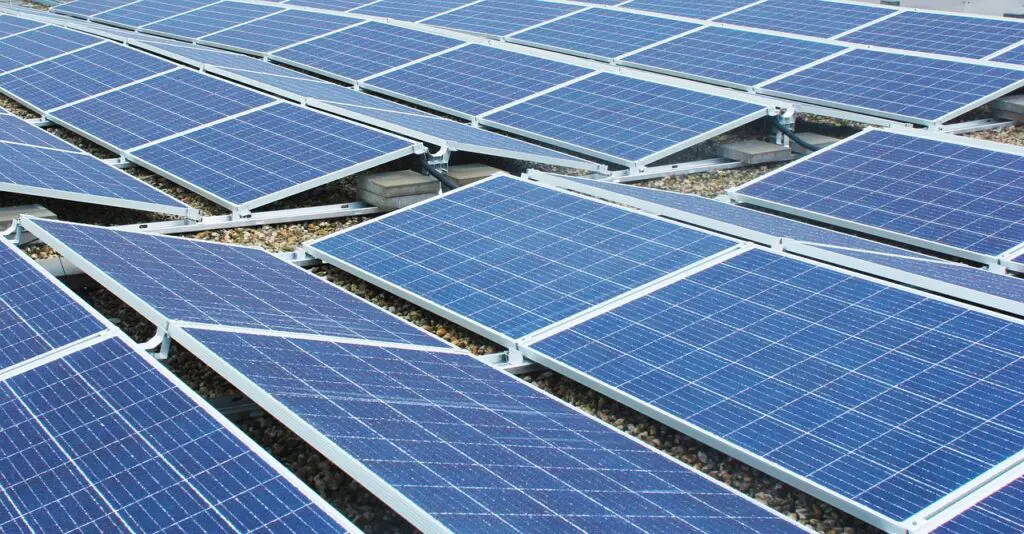In recent years, the search for alternative and renewable energy sources has gained significant momentum.
Solar energy has emerged as a promising solution to meet the world’s growing energy demands.
As a result, people have started exploring innovative and cost-effective ways to harness solar power.
One idea that has captured the imagination of DIY enthusiasts and environmentally-conscious individuals alike is the concept of repurposing old compact discs (CDs) to create solar panels.
It is possible to create a solar panel using CDs by removing their reflective layer and adding a conductive material to generate a photovoltaic effect.
However, due to the reflective surface of CDs not being optimized for solar energy conversion and their materials not being able to withstand the high temperatures and UV exposure typical in solar panels, the resulting solar panel would likely not be very effective or practical for everyday use.
Furthermore, producing a solar panel using CDs would require significant effort and time, and the electricity generation output would likely be inadequate.
While creating a solar panel from CDs is technically possible, it may not be a practical or efficient way of producing renewable energy.
Creating A Solar Cell From A CD: A Step-By-Step Guide
Crafting a solar cell from a CD is a relatively straightforward process, which can be condensed into four easy steps.
Assemble Your Supplies
To make a solar cell from a CD, you’ll need the following materials:
- 1 CD
- 1 Black sharpie
- 2 Alligator clip wires
- 1 Knife or razor blade
- 1 Roll of tape
CD Preparation
Begin by using a knife or razor blade to carefully etch evenly spaced, straight lines onto the CD’s surface.
Once the scratches are done, fill them with the black Sharpie to enhance light absorption and improve the solar cell’s efficiency.
Making Connections
Attach the positive (red) alligator clip wire to the scratched and blackened side of the CD and the negative (black) wire to the unscratched side. Secure the wires in place using tape.
Testing
To test your solar cell’s effectiveness, expose it to a light source, such as a lamp or sunlight. Observe whether the wire connected to the blackened side of the CD begins to emit light. If it does, you’ve successfully created a functioning solar cell from a CD.
What Is The Process Of Create A Solar Cell At Home?
Creating a solar cell at home using materials other than silicon, such as copper oxide, is possible. Here is what you will need:
- Copper oxide (CuO)
- One sheet of fluorine-doped tin oxide (FTO)
- One sheet of conductive glass
- Power source (e.g., a battery or solar panel)
- Voltmeter
- Silver paint
Begin by mixing the copper oxide and silver paint, then apply the mixture to the FTO glass. Next, coat the conductive glass with a thin indium tin oxide (ITO) layer.
Place the two pieces of glass together with the silver paint in between, and measure the voltage using a voltmeter.
What Household Items Can Be Used To Make Solar Panels?
Apart from CDs, several other household items can be used to create makeshift solar panels or solar collectors.
By stacking painted aluminum cans in a wooden or metal frame and covering them with a transparent material, you can create a solar air heater that captures and distributes heat indoors.
Plastic bottles can be used to construct solar water heaters. Fill the bottles with water, paint them black, and arrange them to absorb sunlight.
The heated water can be circulated through a simple piping system for domestic use. Egg cartons can be used as a mold to create parabolic reflectors.
You can create a solar cooker or concentrator by lining the egg carton with a reflective material, such as aluminum foil, and arranging them to focus sunlight on a central point.
Can CDs Be Damaged By Sun?
CDs, like many other materials, can be damaged by prolonged exposure to direct sunlight or heat.
The sun’s rays can cause a temperature rise, which may lead to the disc’s warping or deformation.
Additionally, the intense UV radiation from the sun can degrade the CD’s data layer, eventually resulting in data loss or read errors.
It is essential to store CDs in a cool, dry environment, away from direct sunlight or heat sources, to prolong their lifespan and maintain their data integrity.
While a protective case can help shield CDs from physical damage, it may not offer adequate protection against the harmful effects of excessive heat or sunlight exposure.








